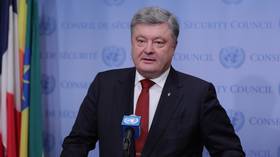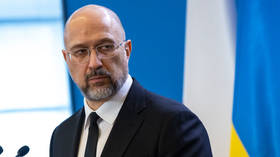Robot killer use defended by Dallas police: ‘No other option but detonate where suspect was’
Dallas police vigorously defended the use of a killer robot to take out the suspected sniper who launched an ambush at a Black Lives Matter event earlier in the week killing five officers. There was “no other option but to use our bomb robot,” the police chief said.
The robot delivered an explosive to kill Micah Xavier Johnson, 25, who on top of shooting dead five police officers also injured nine others, included two civilians. Johnson barricaded himself inside a parking lot as hundreds of people took to the streets on Thursday night in Dallas.
After negotiators’ efforts fell flat with Johnson tauntingly wondering how many officers he had hit with gun, law enforcers had to change their tactics. Police chief David Brown asked officers to “use their imaginations” to devise a strategy to disable the shooter.
“He seemed very much in control and very determined to hurt other officers,” Brown told CNN on Sunday. “Without our actions, he would have, he would have hurt more officers.”
“I approved it and would do it again if presented with same circumstances,” he said. “I appreciate critics but they are not on the ground. And their lives are not at risk.”
Still he said he understood the questions why non-lethal methods were not used to disable the suspect. On Friday, Brown told reporters police saw “no other option but to use our bomb robot and place a device on its extension for it to detonate where the suspect was. Other options would have exposed our officers to grave danger.”
The use of the killer robot was met with various reactions with some people believing the shooter had to be stopped by whatever means necessary and others feeling concerned over the militarization of police.
@latimes Why risk the life of one more Dallas police officer, to stop a killer? No ethical dilemma here.
— Ronin (@Cattleclass) July 10, 2016
Dallas Mayor Mike Rawlings welcomed the decision made by Brown, saying it was “the right call” and the same strategy is to stay in place, should a similar episode happen again.
“When there’s no other way, I think this is a good example. The key thing is to keep our police out of harm's way,” he said.
Gunman Micah Johnson who was wounded in the shootout with police scribbled a mysterious message reading just “RB” on the wall with his blood before being killed in an explosion, Police Chief Brown also told CNN.
Investigators are yet to establish the meaning of those letters. They have already gone through his cell phone, laptop and journals looking for clues.
Johnson is suspected of having planned a much larger attack on police officers, Brown added. The recent Black Lives Matter protest may have provoked him to act.
#dallas This shows us why a robust, ethical justice system must b in place. A 2 tiered justice system means nobody gets the justice deserved
— Snark Yone (@SnarkicusMax) July 8, 2016
Police have already deployed remotely controlled devices during critical situations to neutralize a suspect, but not to kill anyone, experts say. In 2014, police in Albuquerque, New Mexico, used a remote-controlled device, but loaded it with non-lethal weapons to disorient and subdue an armed and barricaded attacker.
I know this is terribly unpopular, but I'm deeply disturbed that American police blew a man up w/ a bomb robot. https://t.co/xW7KA3X5wd
— Shaun King (@ShaunKing) July 9, 2016
Another point for consideration is whether officers had been trained to use this kind of lethal weapon, or was this was a spontaneous and improvised act that doesn’t contribute to public security?
“It seems what Dallas did was a heat-of-battle, improvised situation,” Damon Cecil, a spokesman for the Arizona Department of Public Safety, told ABC. “We use it (the robots) to perform several tasks in tactical operations to avoid putting our troopers in harm’s way.”
@washingtonpost I don't like it. Sending in bombs with robots its a bad precedent. They should have waited the guy out no matter how long.
— Financial Dumbo (@financial_dumbo) July 8, 2016
The robots used by the US police come from the US military under a Defense Department program. Law enforcement agencies across the country have Packbot robots made by Endeavor Robotics, the Talon from QinetiQ and the MARCbot made by Exponent, the model used in Dallas.
Unsurprising - the robot-bomb used in Dallas came from Pentagon program to give away unused war weaponry to police https://t.co/auotPD4RzB
— Glenn Greenwald (@ggreenwald) July 8, 2016
@Khanoisseur I don't mean to be offensive, but the money your country spends on law enforcement is obscene. Why at war with own citizens?
— Jason Beach (@JasonBeach11) July 9, 2016
“It opens a whole new set of questions of how to deal with these kinds of situations. Where are the police going to draw the line when trying to decide between continuing to negotiate and doing something like this?” one of the designers that worked on MARCbot, William Cohen, told AP.
READ MORE: Bomb making materials, rifles, ammunition found at Dallas shooter's home – police
“If lethally equipped robots can be used in this situation, when else can they be used?" Elizabeth Joh, a University of California at Davis law professor, also said. "Extreme emergencies shouldn't define the scope of more ordinary situations where police may want to use robots that are capable of harm."













